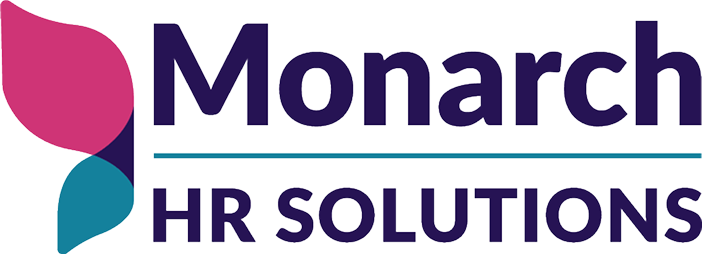By Kimberly Kafafian
Some of the worst career decisions I made were for bumps in my paycheck. Even worse, there was a direct correlation between more money and more misery. I remember sitting at my desk, working for a then Fortune 100 company thinking, “What had I done?” (That particular company paid employees 40% higher than other companies so you were “locked” into staying.) As I continued to navigate my career, I realized there was so much more to work than a paycheck. While $$$ might initially attract talent, it isn’t enough to motivate and retain talented workforce in the long-term.
I think it’s gotten even more complicated with today’s workers who are looking for more personalized incentives. While salary is important, living in a COVID world for the last two years has spurred workers across the generational divide to reassess their priorities. They want more than a paycheck; they want to be appreciated, valued and considered. They want work/life balance. They want flexibility. They want to be seen and heard. And as the Great Resignation has greatly demonstrated, millions of workers are taking a stand with their demands. Yes, that is millions of workers for whom money was not enough to keep them engaged, loyal, or in place.
So if money isn’t talking to these workers, what is? At Monarch Consulting, we help businesses identify what incentivizes work for their work segments. And I can tell you that incentives vary from sector to sector, business to business, and team to team. When it comes to incentives, it’s all about the experience. So, it’s important to dig deep and ascertain what drives your teams. What matters to them? What would they consider significant recognition?
As you dive into the desires of your employees, it’s important to have an understanding as to why utilizing non-monetary incentives is so beneficial to your organization.
Benefits of Non-Monetary Incentives:
More memorable than money.
Think back to when you received a last bonus or other cash incentive. Do you remember the amount? What you spent it on? I’m going to guess probably not. But if you received a trip, a spa day, or a physical reward, chances are those incentives are tied to stronger memories.
High value to cost ratio.
When receiving a monetary reward, much is tied to the amount of that reward, and disgruntlement can quickly arise. With non-monetary rewards like a concert or time off, the value the workers assign to the reward tends to be greater than the actual cost of the reward itself.
Easier to talk about with colleagues.
It’s been drilled into our heads – at least through my generation – that you never talk about money. So, when workers receive monetary rewards, they may not be comfortable sharing this information with their colleagues. Take the financial sum out of the equation and those same workers will probably be excited to share the news about the reward they received.
Greater emotional connection.
This benefit best relates to physical rewards like trophies or plaques. There is a special feeling of pride tied to receiving these awards in front of teammates or other work colleagues.
Highly attractive to millennials and Gen Z.
As mentioned above, these two generations in particular are centered on so much more than a paycheck. They’re looking for organizations that offer perks other than a good salary or potential bonuses.
These benefits really hinge on organizations developing a variety of non-monetary perks that best fit their workforce. It’s important for HR teams to work together with management, supervisors and the C-suite to devise an appropriate incentives program. Not sure where to start? Here are some ideas to help you along.
Examples of Non-Monetary Benefits to Help Attract, Motivate and Retain Your Workforce
1. Flexibility
Everyone wants their employers to be more flexible these days for a better work-life balance. Allowing greater flexibility related to where you work and when you work can make a world of difference to your workforce. It shows you value the employee’s time and that you trust them to get the work done.
2. Public Recognition
I have always been a huge proponent of saying thank you to employees and acknowledging their work. I find that this on its own is a powerful motivational tool. Now, take it one step further, by giving praise to workers in front of their colleagues. And go even further by awarding them a plaque, trophy or social media badge they can display with pride. There is a huge emotional attachment here.
3. Time Off
Let’s face it, the last two years have led to a lot of burnout. We all could use a little extra time off to reset. Awarding a day-off is a great way to recognize the hard work your team is putting in – and a great motivator to keep giving your all.
4. Experiential Rewards
Experiences are a great incentive. It can be a spa day, sporting event, trip, wine tasting, Masterclass, concert or other experience your team would enjoy. This will hold a stronger memory than a monetary reward.
5. One-on-One Time
Consider breakfast, lunch or dinner with the boss. The time taken for these one-on-one meetings demonstrates your appreciation and makes workers feel noticed and recognized.
6. Physical Rewards
Physical rewards can go beyond plaques and trophies. Cool gadgets, golf clubs, and wine or coffee subscriptions are just a few examples of some non-monetary rewards.
7. Opportunity for Personal Development
Recent research reveals the strong correlation between career development and employee engagement. The 2021 Talent Index found 83% of employees think their company should help with career progression. This is underscored by a Lattice survey in which a staggering 76% of respondents said they would be somewhat or very likely to leave a company because they were dissatisfied with career progression opportunities. It’s obvious that career development opportunities – trainings, courses, workshops – are highly valued by employees.
Today’s labor market is a tight one. Stand out by offering the right non-monetary incentives for your organization’s workforce.

